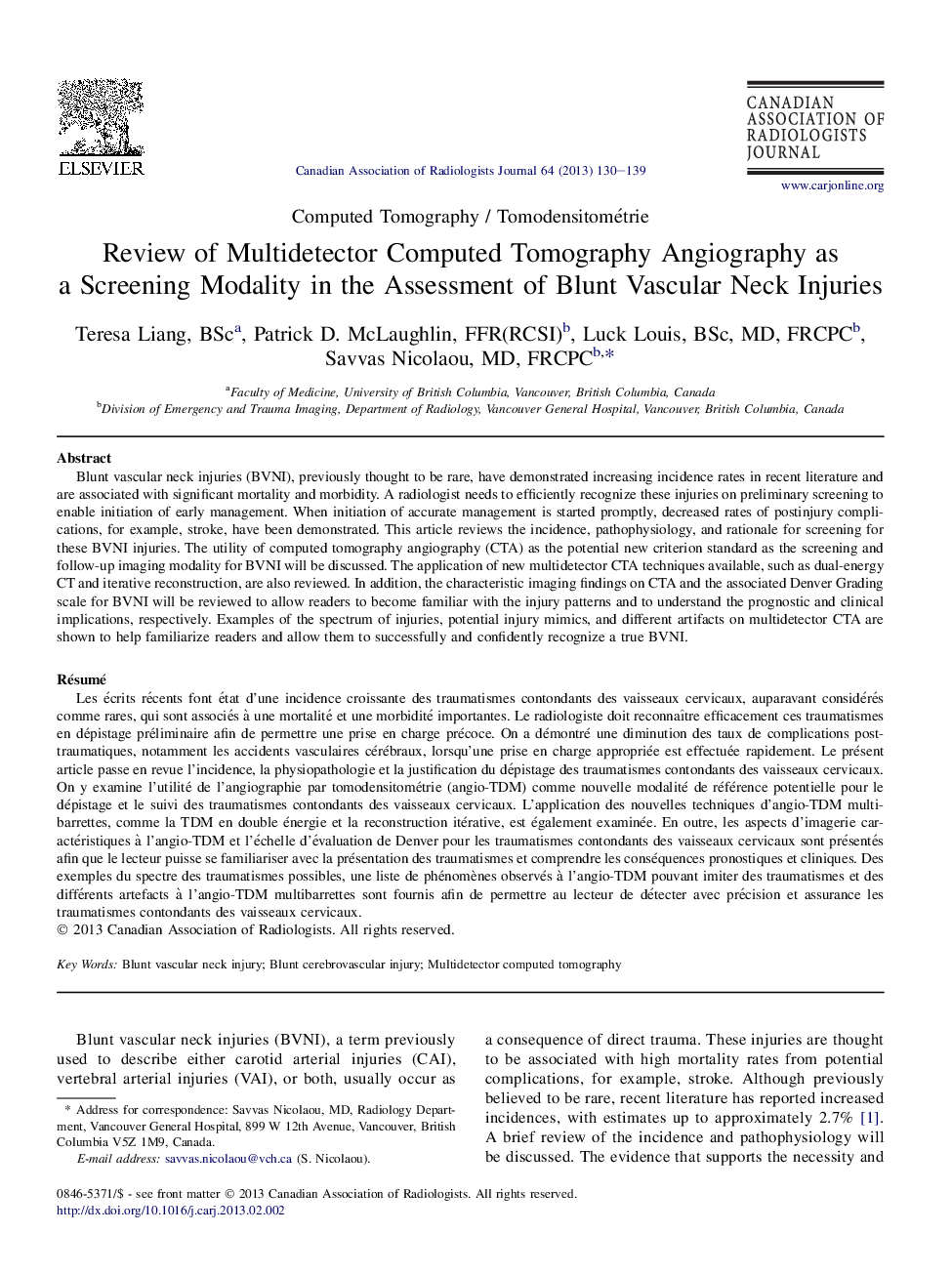| Article ID | Journal | Published Year | Pages | File Type |
|---|---|---|---|---|
| 4220646 | Canadian Association of Radiologists Journal | 2013 | 10 Pages |
Blunt vascular neck injuries (BVNI), previously thought to be rare, have demonstrated increasing incidence rates in recent literature and are associated with significant mortality and morbidity. A radiologist needs to efficiently recognize these injuries on preliminary screening to enable initiation of early management. When initiation of accurate management is started promptly, decreased rates of postinjury complications, for example, stroke, have been demonstrated. This article reviews the incidence, pathophysiology, and rationale for screening for these BVNI injuries. The utility of computed tomography angiography (CTA) as the potential new criterion standard as the screening and follow-up imaging modality for BVNI will be discussed. The application of new multidetector CTA techniques available, such as dual-energy CT and iterative reconstruction, are also reviewed. In addition, the characteristic imaging findings on CTA and the associated Denver Grading scale for BVNI will be reviewed to allow readers to become familiar with the injury patterns and to understand the prognostic and clinical implications, respectively. Examples of the spectrum of injuries, potential injury mimics, and different artifacts on multidetector CTA are shown to help familiarize readers and allow them to successfully and confidently recognize a true BVNI.
RésuméLes écrits récents font état d'une incidence croissante des traumatismes contondants des vaisseaux cervicaux, auparavant considérés comme rares, qui sont associés à une mortalité et une morbidité importantes. Le radiologiste doit reconnaître efficacement ces traumatismes en dépistage préliminaire afin de permettre une prise en charge précoce. On a démontré une diminution des taux de complications post-traumatiques, notamment les accidents vasculaires cérébraux, lorsqu'une prise en charge appropriée est effectuée rapidement. Le présent article passe en revue l'incidence, la physiopathologie et la justification du dépistage des traumatismes contondants des vaisseaux cervicaux. On y examine l'utilité de l'angiographie par tomodensitométrie (angio-TDM) comme nouvelle modalité de référence potentielle pour le dépistage et le suivi des traumatismes contondants des vaisseaux cervicaux. L'application des nouvelles techniques d'angio-TDM multibarrettes, comme la TDM en double énergie et la reconstruction itérative, est également examinée. En outre, les aspects d'imagerie caractéristiques à l'angio-TDM et l'échelle d'évaluation de Denver pour les traumatismes contondants des vaisseaux cervicaux sont présentés afin que le lecteur puisse se familiariser avec la présentation des traumatismes et comprendre les conséquences pronostiques et cliniques. Des exemples du spectre des traumatismes possibles, une liste de phénomènes observés à l'angio-TDM pouvant imiter des traumatismes et des différents artefacts à l'angio-TDM multibarrettes sont fournis afin de permettre au lecteur de détecter avec précision et assurance les traumatismes contondants des vaisseaux cervicaux.
